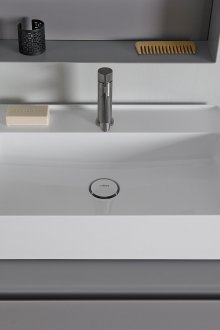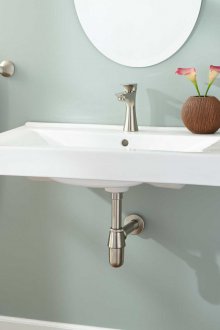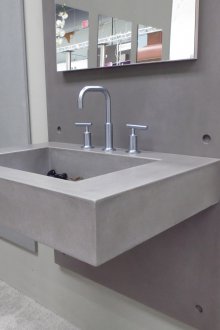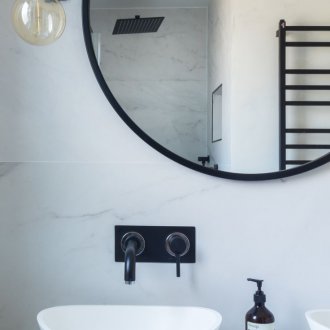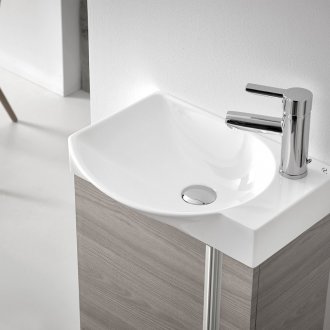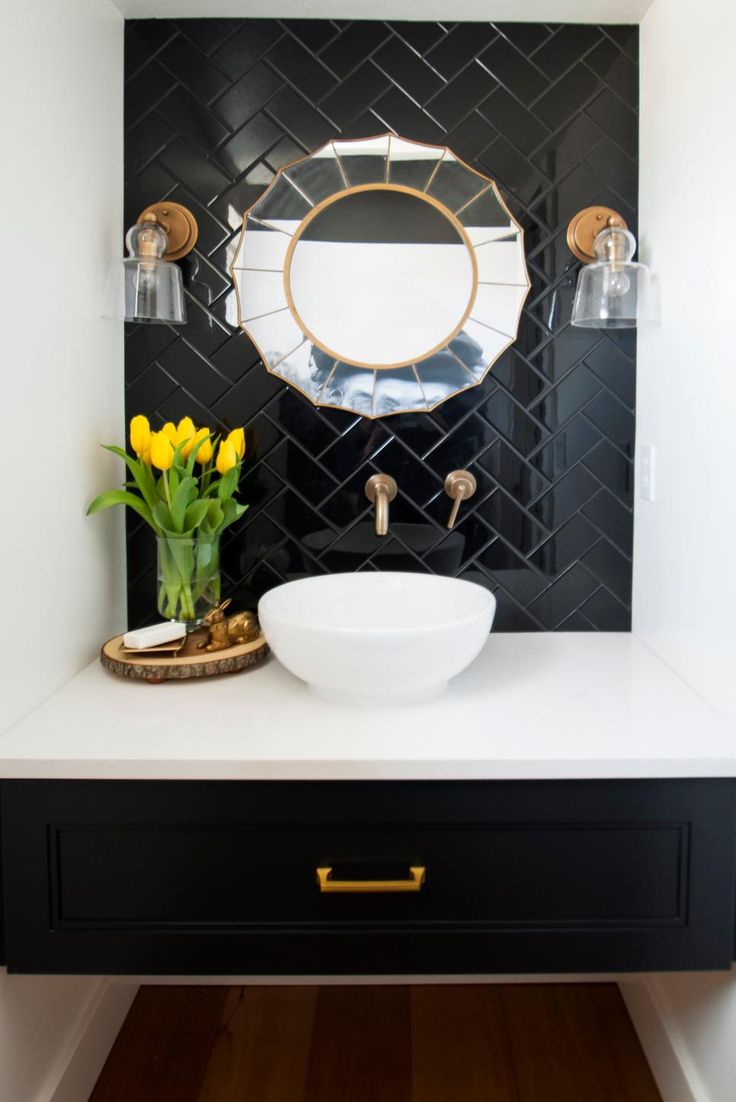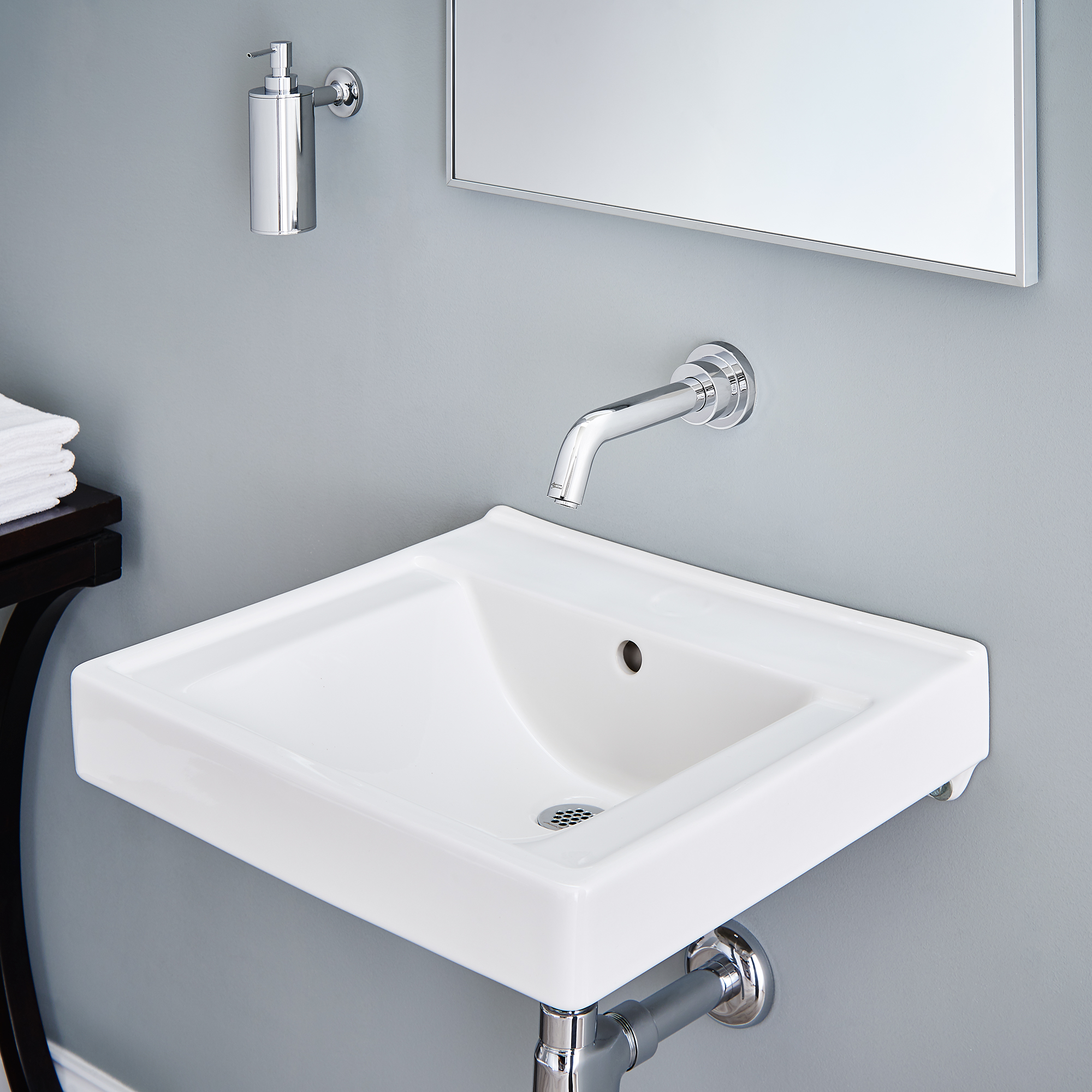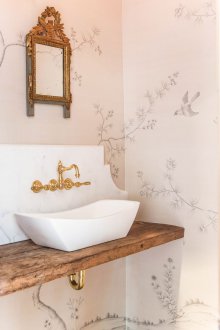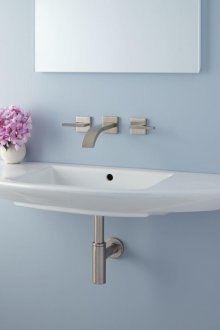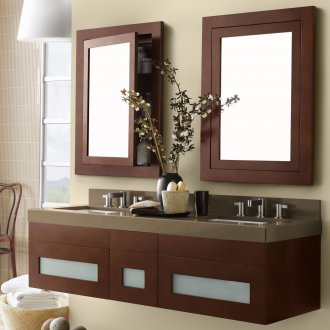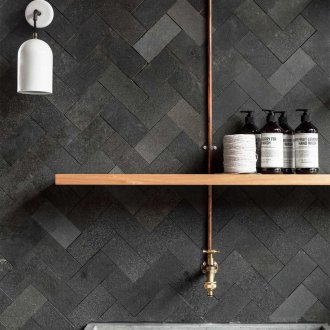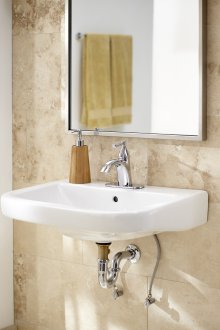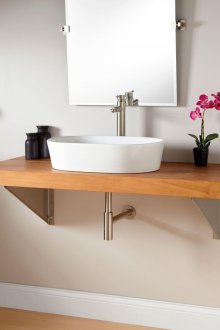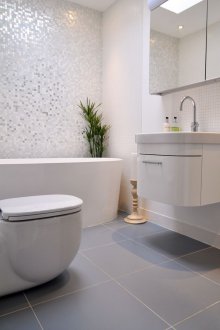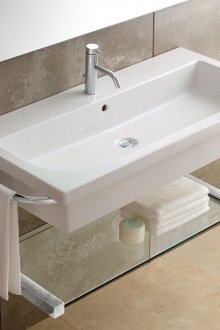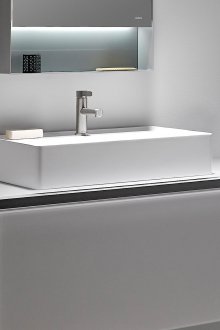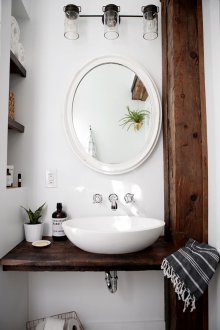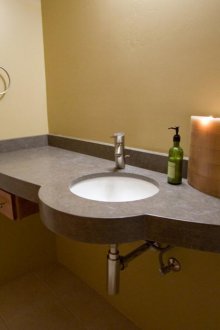Features and advantages of a hanging sink (25 photos)
Content
The design of plumbing and bathroom furniture does not stand still. Functional and style solutions constantly appear on the market, which make the bathroom beautiful, convenient and unusual. Such constructions include the hinged sink for the bathroom, which makes it possible to create the effect of soaring in the air for a lighter and more spacious interior. This sink for the bathroom has its own characteristics and advantages.
Types of Hanging Sinks
A common feature of such a washbasin is that they are mounted on the wall. However, there are several subspecies of such shells. These include:
- Classic hanging bathroom sinks. These are ordinary washbasins that attach to the wall.
- Hanging sink with extra space for cosmetics. A bowl of such a sink has a place where you can put toiletries and cosmetics. At the same time, such a wash basin is attached to the wall without additional elements.
- Wall-mounted washbasin with washbasin. Hanging cabinet with sink attached to the wall. This design option allows not only to store things, but also to hide pipes, drains and other communications.
- Overhead sink. A feature of this design is that the washbasin is superimposed on a stand or hanging furniture.
- Built-in hanging sink in the bathroom. In this case, the bowl is built into the hanging furniture, creating a single workspace. Hanging furniture hides communications and allows you to store bath accessories and cosmetics.
Hanging sinks also vary in shape and size. In shape, such a sink happens:
- rectangular;
- round;
- square;
- oval hanging sink;
- double or single hanging sink;
- asymmetric;
- oval;
- corner hanging sink;
- sink with countertop.
Regardless of shape or size, such sinks have rounded edges. This increases the hygiene and ergonomic design. Most often, oval or rectangular wall mounted washbasins are installed. Such designs allow you to wash comfortably without spraying water. Sinks with countertops are installed in the bathrooms of the elite class.
A wide range of shapes and sizes makes it easy to choose the best design for your hanging sink. However, one should not forget about another significant selection criterion - material.
Main materials for hanging sinks:
- Hanging glass sink. They have an unusual design, therefore they are used to create a stylish and beautiful interior. For such sinks, special tempered glass is used, which is durable and reliable. The disadvantage of such washbasins is the need for careful care, the absence of which leads to stains and loss of appearance.
- Earthenware washbasins. Modern designs are covered with glazed enamel, which reduces the porosity of the material, and also protects it from damage.
- Steel sinks. Used for installation in the bathroom or in the kitchen. Suitable for interior in hi-tech style.
- Marble sinks. Differ in high cost, excellent appearance and operational qualities.
- Artificial stone for sinks.A good alternative to natural stone. The characteristics of such washbasins remain at the same high level, and the cost is much lower. At the same time, a black sink made of artificial stone looks very stylish and unusual.
- Acrylic hanging sink. Such sinks can be white, black or bright colors. In addition, acrylic sinks are durable, easy to maintain and have a smooth surface.
- Combined designs are also available. For example, the bowl is made of glass, and the console is made of stone or ceramic.
Advantages and disadvantages of overhead washbasins
Hanging sinks are very popular. This is due to their significant advantages:
- Free space. Suspension system for fixing the sink provides free space under it. This creates a feeling of lightness and compactness. In addition, a sink can be installed above the washing machine, which will save space in a small bathroom.
- Easy to clean. Cleaning in a bathroom with a suspended structure is much easier than cleaning in a bathroom with a floor sink. In addition, the hinged sink is characterized by a high rate of ergonomics.
- Functionality. The hinged washbasin can be installed at any convenient height. This will allow you to independently choose the height of the sink, making it comfortable to use. In addition, the choice of washing height allows the most convenient use of the useful area of a small room.
- The ability to hide communications and fixtures. Suspended structures allow you to hide all plumbing communications. In this case, hanging tables or a specially made box can be used.
- Despite the obvious advantages of overhead washbasins, they have one drawback. Their installation requires a strong concrete base. Such structures are mounted on the wall, so if there is a plasterboard partition in this place, installation will be impossible.
Features of installation of a hanging washbasin
To install the hanging sink, check the strength of the wall. Hanging washbasins can only be installed on sturdy walls. Plasterboard designs are not able to reliably fix products due to low bearing capacity.
Steps for installing a hanging sink:
- Choosing a place to install. Suspended structures can be installed at any height, so you can choose the most convenient option for using the sink. When making measurements and marks, the distance from the floor, as well as the dimensions of the washbasin itself, should be taken into account.
- Installing the sink. To install the washbasin, make holes with a drill or punch, and then hammer in the dowels. Next, you should attach the brackets to the wall on which to hang the structure. To increase the fastening strength, it is recommended to pour a little glue into the holes, and then hammer in the expansion bolt shields. The installed sink should fit snugly against the wall and not wobble. When installing the sink in the wall, it is recommended to hide the sewer pipes under the finish.
- Washbasin connection. After installation, a siphon should be attached to the washbasin and connected to the sewer. Then you need to connect the washbasin to the water supply. In this case, it is recommended to use special flexible wiring. To protect the structure from leakage, use a fum tape. It can be used to reliably seal all joints.
- Verification of work. An important stage of the installation is to check the operability of the washbasin. To do this, turn on the water and check the quality and reliability of all joints. If even minor drops appear, turn off the water, tighten all the nuts more tightly, and then grease the previously dried joints with sealant.
Installing a hanging sink should not cause difficulties even for an inexperienced craftsman. However, if there is no confidence in the quality of the work performed, it is better to call a professional. Otherwise, expensive plumbing may be damaged.
Stylish and unusual hanging sinks with a drawer, bedside tables or in a minimalist design - a great solution for small bathrooms. In addition, their use allows you to create a beautiful original design, as well as increase hygiene and ease of use of the bathroom.
